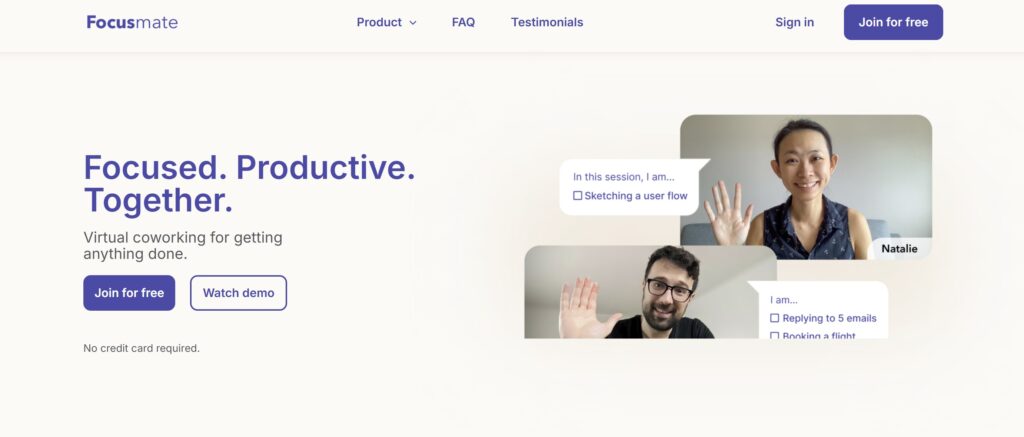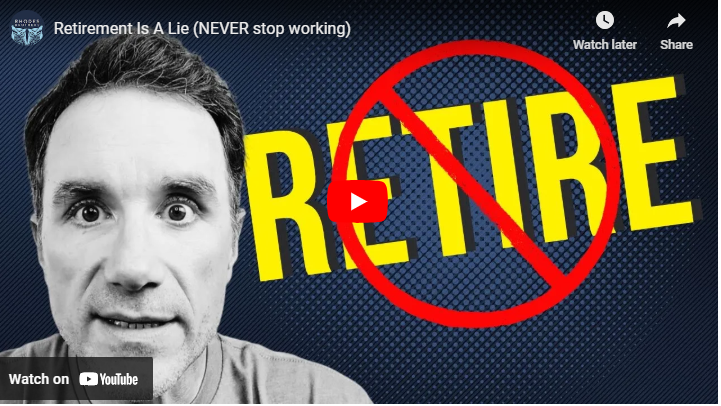For More Free Videos, Subscribe to the Rhodes Brothers YouTube Channel.
Have you ever wondered why some people seem to climb the ladder of life with ease while the rest remain stuck in the same place, year after year? The truth is, achieving success isn’t reserved for the lucky or the privileged—it’s for those who know how to take consistent, intentional action. And here’s the best part: you don’t need years of effort to start outpacing 99% of people. In fact, with the right strategies, you can begin to set yourself apart in just one day.
John S. Rhodes, of the Rhodes Brothers, puts it perfectly: “Action transforms knowledge into results. Without it, you will remain stuck where you are, despite knowing better how to get where you want to go.” This quote underscores the essence of success: it’s not about what you know—it’s about what you do with that knowledge.
In this post, we’ll explore four proven strategies that will help you gain a competitive edge over 99% of others. Whether you’re looking for professional growth, personal development, or simply a way to stand out, this guide will arm you with actionable insights. Stick with me, because transformation begins here.

TL;DR
Here’s a quick summary of the strategies we’ll cover:
- Take Action, Not Just Notes: Knowledge alone won’t get you ahead. Applying what you know is what counts.
- Consistency is Key: Small, sustained efforts lead to exponential success over time.
- Adapt to Failure: Learn from mistakes and use them as stepping stones to success.
- Stay Focused and Determined: Align your daily actions with a clear vision and avoid distractions.
Knowledge Alone Isn’t Enough: Why Action Matters More
Most of us fall into the trap of thinking that learning is progress. We read books, watch motivational videos, attend webinars, and even take courses, but then… nothing changes. Does this sound familiar?
The harsh truth is that knowledge without action is useless. According to John S. Rhodes, “Knowledge is raw material—it’s like a flower waiting to bloom. But until action is taken, there is no growth.” This means that even if you have all the tools and insights, you won’t get anywhere until you start doing.
How to Take Action Effectively
Taking action is the bridge between goals and results. While planning and learning are essential, they won’t lead to success unless paired with consistent action. Many people get stuck in analysis paralysis or wait for the “perfect moment,” but the truth is, progress comes from doing. The key is to take smart, intentional steps that build momentum and move you closer to your goals. Here’s how to take action effectively:
- Break Down Your Goals: Start by identifying one specific area where you want to improve. For example, if you’re learning about personal finance, pick one actionable step like “create a monthly budget” instead of just reading about investing.
- Schedule It: Block time on your calendar to execute what you’ve learned. For instance, if you watched a tutorial on starting a YouTube channel, spend 30 minutes filming your first video today.
- Use the 2-Minute Rule: If a task can be started in under two minutes, do it immediately. This simple psychological trick helps you overcome procrastination and gets the ball rolling.
Tools to Help You Take Action:
- Trello or Asana: Organize tasks and track your progress.
- Notion: A versatile tool for managing projects and ideas.
- Focusmate: Pair up with a virtual accountability partner to stay on track.

Consistency is the Secret Sauce
It’s not what you do once in a while that counts—it’s what you do consistently. If you’ve ever started a project with enthusiasm only to abandon it a few weeks later, you’ve experienced the power of inconsistency. Success loves repetition.
How to Build Consistency
When it comes to success, consistency is the bridge between goals and results. Small, repetitive actions, performed daily, compound over time to produce extraordinary outcomes. But let’s face it: staying consistent can be hard. Life gets busy, motivation wanes, and distractions creep in. So how do you stick to your goals long enough to see real progress? Let’s break it down step by step.
- Start Small: As James Clear, author of Atomic Habits, says: “The most effective way to change your habits is to focus not on what you want to achieve, but on who you wish to become.” Begin with small, manageable habits, like spending 10 minutes a day on a skill.
- Track Your Progress: Use habit trackers like Habitica or even a simple journal to document your daily efforts.
- Create Routines: Consistency thrives on structure. For example, if you’re trying to exercise regularly, schedule your workouts at the same time every day.
- Celebrate Small Wins: Reward yourself for sticking to your habits. This reinforces positive behavior and keeps you motivated.
Example:
If you want to write a book, don’t aim to write 10 pages a day. Instead, commit to writing just 200 words daily. Over time, these small efforts compound into significant progress.
Common Pitfall:
Most people give up too soon because they expect instant results. Consistency builds momentum, and momentum leads to breakthroughs.
Adapt and Learn from Failure
Here’s a hard truth: you will fail. And that’s okay. In fact, failure is one of the most valuable teachers you’ll ever have. As Rhodes mentions, “You either win or you learn. There is no failure.”
Every setback is an opportunity to gain insight, refine your approach, and try again. The difference between those who succeed and those who don’t lies in how they respond to failure.
How to Embrace Failure
Failure is often seen as a dead end, but in reality, it’s one of the most powerful tools for growth. Every successful person has failed—often more times than they’ve succeeded. The difference is how they respond to failure. By shifting your perspective and learning from your setbacks, you can turn failures into stepping stones toward your ultimate goals. Here’s how to embrace failure and use it to fuel your progress:
- Reframe Your Mindset: Instead of seeing failure as a negative, view it as feedback. What can you learn from what didn’t work?
- Document Your Lessons: Keep a “Failure Journal” where you write down what went wrong and how you’ll adjust next time. Over time, this becomes a treasure trove of insights.
- Experiment Freely: Treat your goals like experiments. Not every attempt will work, but each one brings you closer to success.
Tools for Learning from Failure
- Evernote: Capture lessons and ideas from your experiences.
- MindMeister: Create mind maps to brainstorm solutions after a setback.
Example:
Thomas Edison, when asked about his 10,000 failed attempts at inventing the light bulb, famously said, “I have not failed. I’ve just found 10,000 ways that won’t work.” Let this remind you that persistence beats perfection.
Focus and Determination
In a world filled with distractions, focus is a rare and valuable skill. If you want to outpace 99% of people, you need to stay laser-focused on your goals while ignoring the noise around you.
How to Stay Focused
Staying focused in today’s fast-paced, distraction-filled world is no small feat. Notifications, social media, endless emails, and multitasking can scatter your attention and prevent you from making meaningful progress on your goals. To get ahead, you need to master the art of focus. By aligning your actions with a clear vision, removing distractions, and working with intention, you can accomplish more in less time and with greater precision. Here’s how:
- Define Your Vision: What’s your ultimate goal? Write it down and revisit it daily.
- Eliminate Distractions: Use tools like Freedom or StayFocusd to block distracting apps and websites.
- Prioritize Ruthlessly: Follow the 80/20 rule (Pareto Principle) by focusing on the 20% of tasks that generate 80% of your results.
- Practice Deep Work: Dedicate uninterrupted blocks of time to important tasks. Cal Newport’s book Deep Work outlines practical strategies for cultivating focus in a distracted world.
Example: If your goal is to build a side business, allocate one hour of focused work each day. Turn off notifications, shut the door, and immerse yourself in the task at hand.
Common Pitfall: Multitasking. Research shows that multitasking reduces productivity by up to 40%. Instead, focus on one task at a time for maximum efficiency.
Actionable Steps or Direct Advice on How to Get Ahead of 99% of People
Getting ahead of 99% of people in just one day may sound ambitious, but it’s entirely possible with intentional, high-impact actions. The secret lies not in working harder, but in working smarter—focusing on priorities, eliminating distractions, and taking decisive steps that most people overlook.
For students, the key to standing out is building discipline and applying knowledge actively. Start by writing down your top three priorities for the day, such as mastering a difficult concept, completing an assignment ahead of schedule, or reaching out to a professor for guidance. Use tools like the Pomodoro Technique to stay focused and allocate time wisely. While many students procrastinate or passively absorb information, dedicating even a few hours to focused learning or creating a study system can put you miles ahead of your peers.
For working professionals, getting ahead means shifting from reactive habits—like answering emails or attending unnecessary meetings—to proactive efforts that create long-term impact. Begin by auditing your day and identifying tasks that yield the highest returns. Dedicate a few hours to a high-impact project that advances your career, such as solving a pressing problem at work, drafting a proposal, or preparing for a key presentation. Additionally, invest time in learning a valuable skill that others in your field might neglect. For example, if you’re in marketing, take an hour to explore advanced analytics or SEO strategies. Pair this with strategic networking by reaching out to peers or industry leaders on LinkedIn, which helps you build connections that can accelerate your growth.
Stay-at-home parents can get ahead by focusing on small, intentional actions that build momentum. Start the day by setting a personal growth goal, such as dedicating an hour to learning a skill that could lead to a side hustle, like graphic design or crafting. Simplify your environment by decluttering one area of your home, which creates mental clarity and reduces overwhelm. To maximize your time, involve your family in your goals—for example, cooking healthy meals together or taking a walk as a family to build healthy habits. By prioritizing both personal development and family teamwork, you can create a foundation for long-term success.
For career changers, a single day can significantly accelerate your transition into a new field. Begin by researching your target industry to identify the most in-demand skills and certifications. Dedicate a few hours to learning one foundational skill—such as coding, data analysis, or digital marketing—using resources like Coursera or freeCodeCamp. Update your LinkedIn profile to reflect your career aspirations and reach out to professionals in your desired industry for advice or mentorship. Lastly, take immediate action by applying for a few entry-level roles, even if you don’t feel fully qualified. Many people delay their transition waiting for the “perfect” moment, but bold, small steps today can lead to major breakthroughs.
For retirees or empty nesters, getting ahead is about rediscovering purpose and pursuing long-delayed passions. Reflect on activities you’ve always wanted to try, such as writing, painting, or volunteering, and dedicate focused time to them. If you’ve been interested in writing a memoir, spend a few hours drafting an outline or completing a chapter. Join a local club or online group to connect with others who share your interests, as building community can provide motivation and accountability. Whether it’s taking a class, creating art, or learning a new skill, taking action on your passions can bring fulfillment and a sense of purpose to this new chapter of life.
No matter your demographic or experience level, the universal steps to getting ahead in one day remain the same: clarify your priorities, eliminate distractions, and focus on high-impact actions. Start by writing down your top three goals for the day and cutting out time-wasters like excessive social media scrolling. Dedicate 1-2 hours to learning a skill or concept that others overlook—small steps in personal or professional growth compound over time. Take immediate action, whether it’s sending an email, applying for a job, or starting a project, and end the day by reflecting on your progress and planning your next steps. The difference between those who succeed and those who don’t isn’t talent or opportunity—it’s the ability to act decisively. Most people spend their day thinking, planning, or hesitating. Be the exception: take action, focus on what matters most, and watch how quickly you leap ahead of the crowd.
Common Mistakes to Avoid
While the strategies above can significantly improve your chances of success, there are a few common mistakes that can derail your progress. Let’s break these down so you can avoid them:
Paralysis by Analysis
Many people get stuck in the planning phase, overthinking every detail instead of taking action. It’s important to plan, but don’t let planning replace doing. For example, if you want to start a YouTube channel, don’t spend months researching the perfect camera or editing software—start with your phone and learn as you go.
Solution: Set a strict time limit for planning. For instance, give yourself 24 hours to research, then take action immediately after.
Inconsistency
Starting strong but failing to follow through is one of the biggest reasons people don’t achieve their goals. You might feel motivated for the first week, but when the excitement fades, consistency becomes difficult.
Solution: Focus on building habits, not relying on motivation. Use habit-building tools like Habitify or Momentum to track your progress and stay accountable.
Fear of Failure
Fear can paralyze you before you even start. Many people avoid trying altogether because they’re scared they’ll fail or look foolish.
Solution: Reframe failure as a learning experience. Remember Edison’s perspective: every failure is a step closer to success. Start small to reduce the stakes and build confidence.
Chasing Perfection
Perfectionism often leads to procrastination. You might think, “I’ll wait until I’m better prepared,” but in reality, perfection is unattainable.
Solution: Adopt a “progress over perfection” mindset. Start imperfectly and improve over time. For example, if you’re writing a blog post, publish your first draft and refine it later.
Lack of Focus
In our fast-paced, distraction-filled world, staying focused can feel impossible. Social media, emails, and notifications constantly pull us away from deep work.
Solution: Use tools like Focus@Will or Brain.fm to create a distraction-free environment. Set clear boundaries for work and leisure, and practice time-blocking to ensure you dedicate uninterrupted time to your most important tasks.
Frequently Asked Questions
Let’s address some common questions you might have about getting ahead of 99% of people:
How can I start taking action today?
Start with something small and manageable. For example, if your goal is to improve your fitness, do a 10-minute workout today instead of waiting for the “perfect” gym day.
What’s the best way to build consistency?
Start with small, daily habits that are easy to maintain. Tools like Habitica can gamify your progress, making consistency more enjoyable.
How do I overcome the fear of failure?
Understand that failure is part of the process. Every successful person failed before they succeeded. Start small to reduce the pressure and learn to view failure as feedback.
What tools can help me stay focused?
Apps like Freedom, StayFocusd, and RescueTime can help block distractions and ensure your time is spent productively.
How do I align my actions with my vision?
Write down your long-term goals and break them into smaller, actionable steps. Review your progress weekly to ensure you’re staying aligned with your vision.
What should I do when I feel unmotivated?
Focus on your “why.” Why did you start this journey? Revisit your goals and remind yourself of the bigger picture. Sometimes, just starting a task for 2 minutes can reignite your motivation.
How can I track my progress?
Use tools like Notion, Trello, or a physical journal to log your daily and weekly efforts. Reviewing your progress regularly helps you stay motivated and identify areas for improvement.
What’s the key to adapting to failure?
Always ask yourself: “What can I learn from this?” Write down three lessons from each setback and apply them to your next attempt.
Is taking action better than planning?
Yes, action is always better than excessive planning. Start small, test your ideas, and refine your approach as you go.
How do I maintain focus in a busy world?
Eliminate distractions, prioritize your most important tasks, and practice deep work. Tools like Forest can help you stay focused while building a visual representation of your productive time.
Take Your First Step Today
It’s easy to feel overwhelmed by the idea of getting ahead of 99% of people, but remember: it’s not about doing everything at once. It’s about making small, consistent changes that compound over time. Whether you take action, build consistency, embrace failure, or master focus, you’re already setting yourself apart.
As John S. Rhodes wisely said, “Action transforms knowledge into results.” Knowledge is powerful, but only when paired with action. So, what’s the one thing you’ll do today to start your journey?
If you’re ready to dive deeper into personal growth and success strategies, be sure to check out the Rhodes Brothers YouTube Channel for actionable advice, real-life examples, and inspiration to keep you moving forward. Subscribe here.
Resource List
Books
- Atomic Habits by James Clear
- Deep Work by Cal Newport
- The Power of Now by Eckhart Tolle
- The 4-Hour Workweek by Tim Ferriss
Podcasts
Tools
- Trello for task management
- Freedom for blocking distractions
- Habitica for gamified habit tracking
- Google Calendar for scheduling
Apps
- Forest for focus
- RescueTime for time tracking
- Notion for organization and planning





